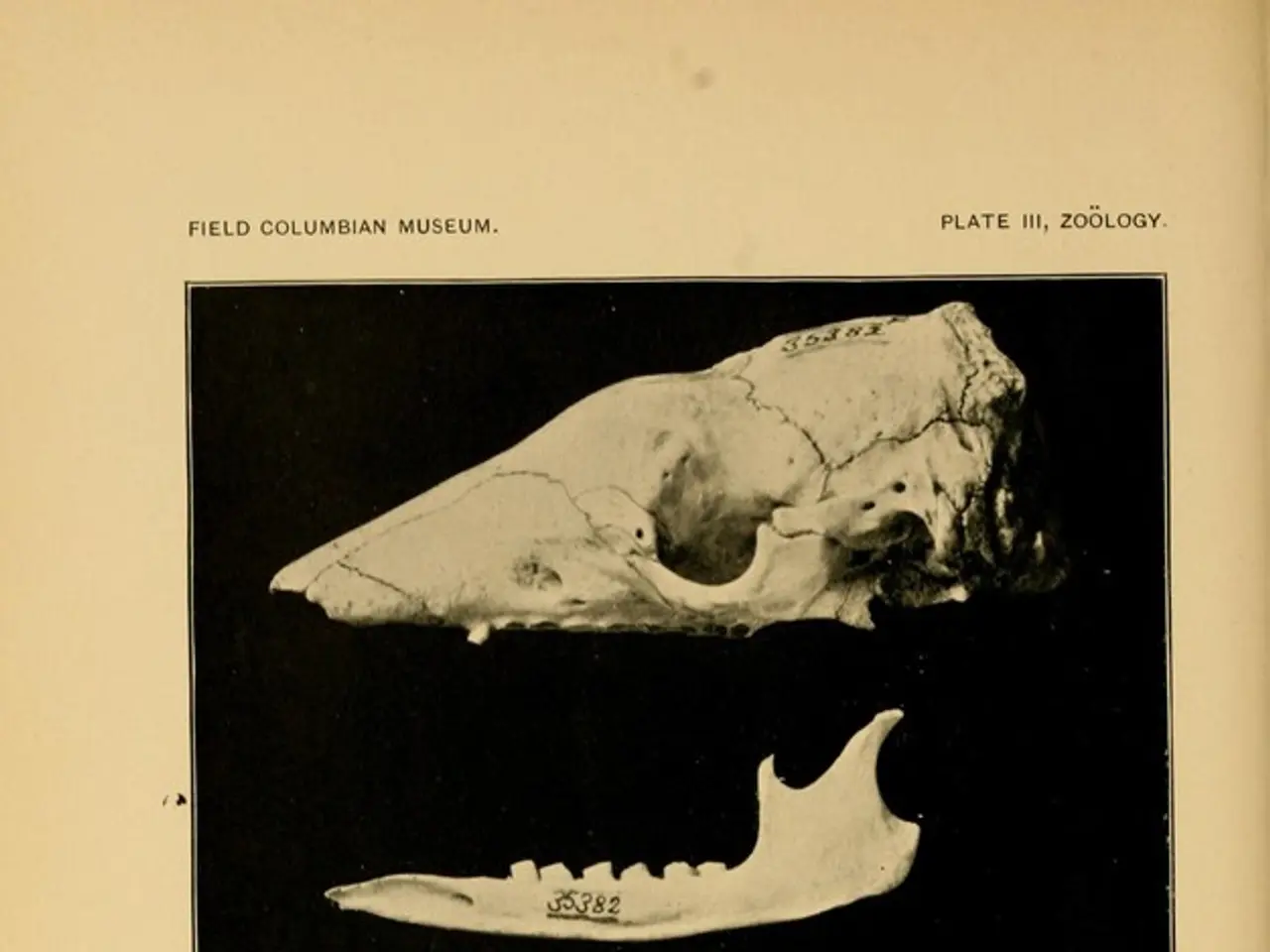Common but often misconstrued health problem in canines: Hypothyroidism, as clarified by a veterinary professional.
In the canine world, hypothyroidism is a common condition that affects the production of thyroid hormones in dogs. This condition, characterised by a deficiency in thyroid hormones T4 and T3, can have significant impacts on a dog's health and wellbeing.
Hypothyroidism is primarily caused by problems within the thyroid gland itself, a condition known as primary hypothyroidism. The two main culprits behind this are lymphocytic thyroiditis and idiopathic thyroid atrophy. Certain breeds, such as Golden Retrievers, Labrador Retrievers, Doberman Pinschers, and Cocker Spaniels, are more predisposed to this condition due to genetic factors or autoimmune thyroiditis.
The clinical signs of hypothyroidism can be varied and subtle. Owners might notice lethargy or reduced activity levels, weight gain without increased appetite, hair loss, a dry, dull coat and flaky skin, cold intolerance, slow heart rate (bradycardia), recurring skin or ear infections, neurological signs, and behavioural changes like increased anxiety.
Fortunately, hypothyroidism in dogs can be effectively managed with the right treatment. Treatment typically involves levothyroxine supplementation, regular monitoring, and supportive care. Levothyroxine, a synthetic form of the thyroid hormone thyroxine (T4), is administered orally, usually twice daily.
The exact dose of levothyroxine is calculated based on the dog's weight and individual response. Regular vet check-ups and blood tests, typically every six to 12 months, are essential to ensure hormone levels stay within the optimal range and to adjust the dose if necessary.
It's important to note that if symptoms return or worsen, the dosage may need adjusting. With proper treatment, most dogs return to their normal selves, becoming more energetic, healthier-looking, and happier.
If you notice any changes in your dog's health, it's always a good idea to speak to your vet. Many symptoms can overlap with other diseases, making a proper diagnosis crucial.
Remember, early detection and prompt treatment can make a significant difference in managing hypothyroidism in dogs. By staying vigilant and working closely with your vet, you can help ensure your furry friend enjoys a long, healthy, and happy life.
References: [1] Dewey, D.R., et al. (2009). Canine Thyroid Function Test Interpretation: A Consensus Statement. Journal of Veterinary Internal Medicine, 23(4), 761-770. [2] Lopez, J.C., et al. (2013). Canine Thyroid Disease: Current Concepts. Veterinary Clinics of North America: Small Animal Practice, 43(5), 821-839. [3] Olson, P.E., et al. (2008). Canine Hypothyroidism: Diagnosis, Treatment, and Monitoring. Veterinary Clinics of North America: Small Animal Practice, 38(6), 1191-1208. [4] Vail, D.A., et al. (2012). Canine Hypothyroidism: Diagnosis and Management. Veterinary Clinics of North America: Small Animal Practice, 42(6), 1075-1090. [5] Wakshlag, J.J., et al. (2012). Canine Hypothyroidism: Diagnosis, Treatment, and Monitoring. Veterinary Clinics of North America: Small Animal Practice, 42(6), 1091-1107.
- Some dog breeds, like Golden Retrievers and Labrador Retrievers, are genetically predisposed to hypothyroidism, a health condition related to the thyroid gland.
- Hypothyroidism in dogs can manifest in various ways, such as lethargy, weight gain, hair loss, and behavioral changes.
- The care of a dog with hypothyroidism often involves levothyroxine supplementation, regular vet check-ups, and blood tests to monitor hormone levels.
- Working closely with a veterinarian is important in managing hypothyroidism, ensuring early detection and prompt treatment for the best possible outcomes.
- The science behind canine health-and-wellness plays a vital role in understanding and treating conditions like hypothyroidism in dogs.
- In the cat world, similar conditions may exist, and it is always a good idea to consult with a veterinarian when noticing any changes in a pet's health.




